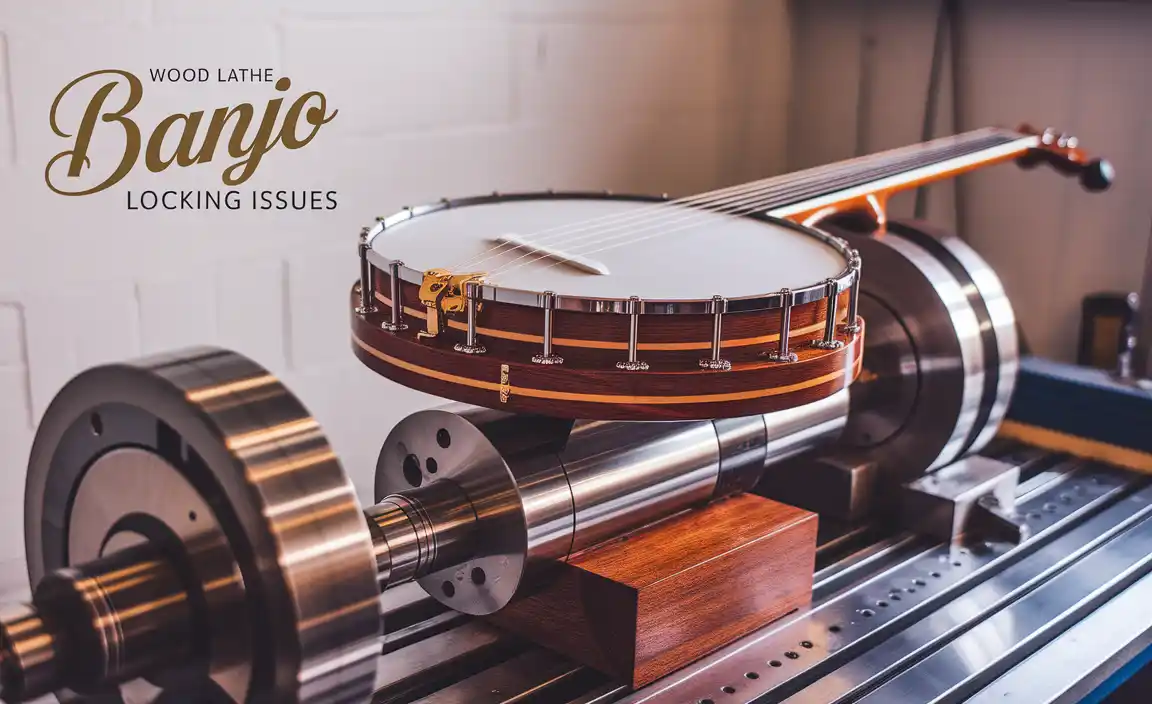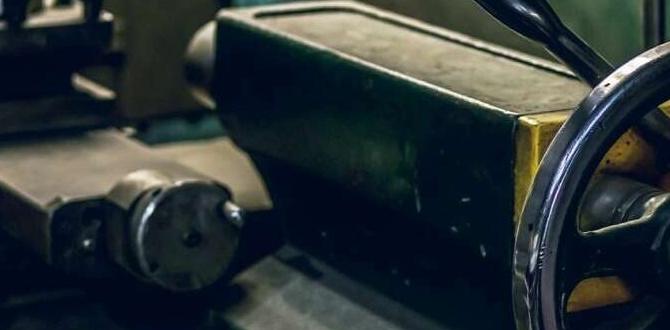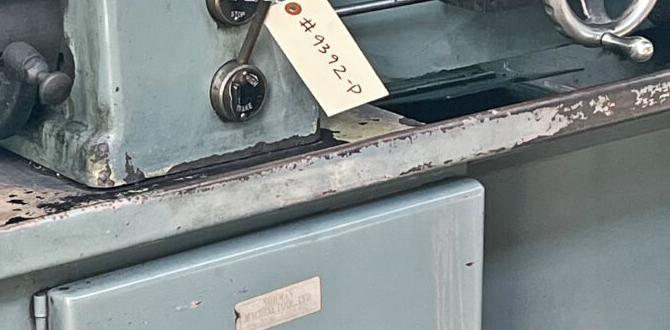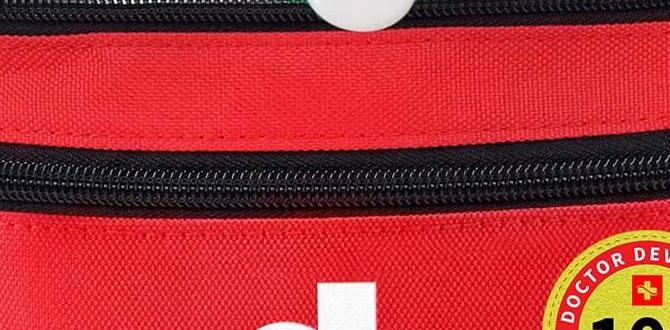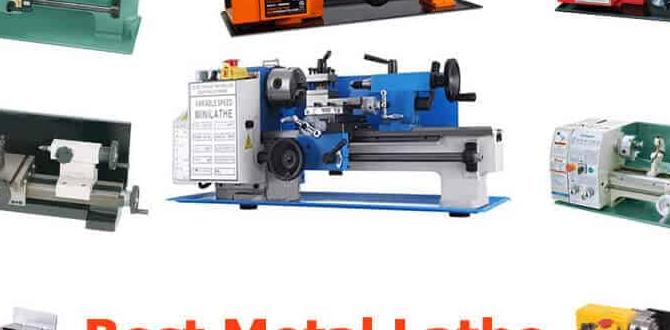A 1/8 inch carbide end mill, especially a stub-length variant with a 10mm shank, is an excellent choice for milling cast iron, offering precision and durability for tight tolerances.
Ever tried to mill cast iron and found your tools struggling? It’s a common hurdle for beginners, especially when dealing with tough materials like cast iron. You want that perfect cut, that precise shape, but your end mill just isn’t cooperating. It can be frustrating, making you wonder if you’re cut out for this machining adventure. But don’t worry! Choosing the right tool, like a specific 1/8 inch carbide end mill, can make all the difference. This guide will walk you through why this tiny but mighty tool is a workhorse for cast iron, how to use it safely, and what to expect. Let’s get your milling projects back on track!
Why a 1/8 Inch Carbide End Mill is Your Go-To for Cast Iron
When you’re facing cast iron, you need a tool that’s tough, precise, and built to handle the job without breaking a sweat. That’s exactly where a 1/8 inch carbide end mill shines, particularly when designed for demanding materials. Let’s break down why this specific tool is so effective.
The Power of Carbide
Carbide, or tungsten carbide, is a composite material known for its incredible hardness and wear resistance. It’s significantly harder than High-Speed Steel (HSS), meaning it can cut through tough materials like cast iron with less wear and tear. This hardness allows it to maintain a sharp edge for longer, which is crucial when you’re dealing with the abrasive nature of cast iron. For a beginner, this translates to fewer tool changes, more consistent cuts, and a reduced risk of tool failure, which can be costly and dangerous.
The Magic of 1/8 Inch
The 1/8 inch (around 3.175mm) diameter might seem small, but it offers some significant advantages for milling compact or intricate parts in cast iron.
- Detail Work: This size is perfect for creating fine details, small slots, or chamfers where larger tools simply won’t fit.
- Reduced Cutting Forces: Smaller diameter end mills generally require less cutting force, making them easier to manage on smaller milling machines or when working with less rigid setups. This is great for beginners who might not have a heavy-duty milling machine.
- Material Removal Rate (MRR): While not designed for hogging out large amounts of material quickly, a 1/8 inch end mill can still achieve a respectable MRR when used with appropriate speeds and feeds. The key is to take smaller, controlled passes.
Stub Length and 10mm Shank: The Game-Changers
You’ll often find 1/8 inch carbide end mills available in different lengths and shank diameters. For cast iron, pairing a 1/8 inch cutting diameter with a stub length and a 10mm shank offers specific benefits:
- Stub Length: This refers to an end mill that is shorter than standard. A shorter flute length means less overhang from your tool holder. Less overhang leads to increased rigidity and reduced vibration. This is a HUGE advantage when milling hard materials like cast iron, as it minimizes chatter and allows for a smoother finish and more accurate cuts.
- 10mm Shank: Many small end mills come with a 1/8 inch shank, which can be less rigid. A 10mm shank (approximately 3/8 inch) offers a much sturdier connection to your collet or tool holder. This increased shank diameter provides greater torsional rigidity and allows for higher torque transfer without flexing, which is essential for predictable cutting in cast iron.
It’s important to note that a 1/8 inch end mill with a 10mm shank isn’t actually 10mm of cutting diameter; the 10mm refers to the diameter of the shank that fits into your milling machine’s collet or tool holder. This combination provides a robust interface for a small cutting tool.
Essential Tools and Setup for Milling Cast Iron
To get the best results when milling cast iron with your 1/8 inch carbide end mill, having the right supporting tools and setting things up correctly is crucial. It’s not just about the end mill itself, but the whole ecosystem around it.
Your Milling Machine and Tool Holder
Milling Machine: Whether it’s a benchtop CNC mill or a larger manual machine, ensure it’s rigid and capable of precise movement. For cast iron, a bit more power and rigidity are always helpful.
Collet Chuck: A high-quality collet chuck system is essential. For a 10mm shank, you’ll need a corresponding collet. ER collets are common and offer good gripping power and runout accuracy. Using a dedicated 10mm collet will ensure your end mill is held securely and with minimal wobble.
Tool Holder: A straight shank tool holder designed to accept your collet system is standard.
Workholding is King!
Properly securing your cast iron workpiece is paramount for safety and accuracy.
- Vise: A sturdy milling vise with hardened jaws is typically the best option. Ensure the vise is clean and the jaws are parallel to the mill table.
- Clamps: For larger or irregularly shaped parts, toe clamps, strap clamps, or fixture plates might be necessary. Always ensure your clamps are not in the path of the end mill!
- Parallel Stock: Use parallels to lift the workpiece off the vise jaws, allowing the end mill to cut freely without hitting the jaws.
Lubrication and Coolant
Cast iron milling generates heat and abrasive dust.
- Cutting Fluid/Mist: While some machinists mill cast iron dry, using a high-quality cutting fluid or a mist coolant system can significantly improve tool life, surface finish, and chip evacuation. For beginners, a mist system is often easier to manage and provides good cooling without making a mess. Look for fluids specifically designed for ferrous metals. You can find great options from companies like Blaser Swisslube.
- Chip Evacuation: Good chip evacuation is vital to prevent the end mill from clogging and overheating. Compressed air can help, especially when milling dry, but coolant systems are far superior for this.
Safety Gear: Non-Negotiable
Safety first, always!
- Safety Glasses: Full-coverage safety glasses are a minimum. Given cast iron’s nature, a face shield over your glasses offers superior protection from flying chips.
- Shop Apron/Work Clothes: Wear sturdy clothing that won’t get caught in the machine. A leather apron can offer protection from chips.
- Gloves: Wear gloves when handling rough materials, but never while the machine is running.
- Hearing Protection: Milling can be loud, especially with cast iron.
- Respirator: Cast iron dust is harmful. Always use a vacuum system to clear chips immediately after a job, and wear a good quality respirator when cleaning up any dust. The Occupational Safety and Health Administration (OSHA) provides guidelines on airborne contaminants.
Understanding Speeds and Feeds for Cast Iron
Getting your speeds and feeds right is one of the most critical aspects of successful milling, especially with a material like cast iron and a small tool. It’s not as complicated as it sounds, and with a little practice, you’ll get the hang of it.
What are Speeds and Feeds?
Spindle Speed (RPM): This is how fast the end mill rotates. It’s measured in revolutions per minute (RPM).
Feed Rate: This is how fast the cutting tool moves through the material. It’s usually measured in inches per minute (IPM) or millimeters per minute (mm/min).
Chip Load: This is the thickness of the chip that each cutting edge of the end mill removes. It’s a crucial factor in determining your feed rate. A good chip load prevents the tool from rubbing and overheating, and ensures efficient material removal.
General Guidelines for Carbide End Mills in Cast Iron
Carbide end mills can run faster than HSS, but cast iron is abrasive, so we need to balance speed with tool longevity. For a 1/8 inch carbide end mill in cast iron, here are some starting points. These are general recommendations, and you may need to adjust based on your specific machine, coolant, and the exact alloy of cast iron.
A good starting point for chip load for a 1/8 inch carbide end mill in cast iron is typically between 0.0005 to 0.0015 inches per tooth (ipt) or 0.013 to 0.038 mm per tooth (mm/t). The number of teeth (flutes) on your end mill will also affect the final feed rate. Most 1/8 inch end mills designed for general-purpose milling will have 2 or 4 flutes.
Let’s use a 4-flute carbide end mill as an example:
Chip Load: Let’s aim for 0.0008 ipt (0.02 mm/t).
Spindle Speed (RPM): For carbide in cast iron, a surface speed (SFM) of around 150-300 SFM is a common starting range. To convert this to RPM for your 1/8 inch (0.125 inch) diameter end mill:
RPM = (SFM 3.25) / Diameter (inches)
Let’s take 200 SFM: RPM = (200 3.25) / 0.125 = 5,200 RPM. This might be high for some benchtop mills, so adjust down if needed. A common range for smaller mills might be 2000-5000 RPM.
Feed Rate (IPM): Feed Rate (IPM) = RPM Number of Flutes Chip Load (ipt)
Feed Rate = 5200 RPM 4 flutes 0.0008 ipt = 16.64 IPM.
So, a good starting point could be:
Spindle Speed: 2,000 – 5,000 RPM (adjust based on your machine’s capability and sound)
Feed Rate: 10 – 20 IPM (or roughly 250 – 500 mm/min)
Important Adjustments and Considerations
Listen to the Cut: The best indicator is the sound. A harsh, chattering sound means you’re likely feeding too fast or not rigid enough. A light, “sugary” sound is usually good. If the mill bogs down, your feed rate might be too high, or your spindle speed too low.
Depth of Cut (DOC): For a 1/8 inch end mill, you generally can’t take very deep cuts in cast iron. A radial depth of cut (how much it cuts in from the side) of 50% of the diameter is common. For axial depth of cut (how deep it cuts down), start with a small value, maybe 0.010 to 0.020 inches (0.25 to 0.50 mm), and increase if the machine and tool can handle it smoothly.
Tool Wear: If the chips start coming off hot and discolored, or you hear increased friction, your feed rate might be too low or speeds too high.
Machine Rigidity: A less rigid machine will require slower feed rates and potentially lower spindle speeds to avoid vibration.
Coolant/Lubrication: If you’re not using coolant, you’ll likely need to run slightly slower speeds and lower feed rates to manage heat.
Here’s a quick reference table for common alloyed cast irons:
| Material | End Mill Type | Surface Speed (SFM) | Chip Load per Tooth (ipt) | Typical RPM (for 1/8″ dia.) | Typical Feed Rate (IPM for 4 flute) | Notes |
|---|---|---|---|---|---|---|
| Cast Iron (Gray, Ductile, Nodular) | 1/8″ Carbide, 2-4 Flute, Stub Length | 150 – 300 | 0.0005 – 0.0015 | 2000 – 5000 | 10 – 25 | Use coolant mist. Start slow and listen. Ensure good rigidity. |
Note: These are starting points. Always consult the end mill manufacturer’s recommendations if available, as they may have specific data for their tool geometry and coatings.
Step-by-Step: Milling Cast Iron with Your 1/8 Inch Carbide End Mill
Let’s walk through the process of setting up and making that first cut safely and effectively. Having a plan makes everything smoother!
1. Prepare Your Workpiece and Machine
Clean the Material: Ensure your cast iron piece is free from dirt, oil, and any old paint or coatings. This prevents contamination and ensures a clean cut.
Mount Securely: Clamp your workpiece firmly in the vise or to the machine table. Use parallels if needed. Double-check that it cannot shift during milling. For critical dimensions, consider using a dial indicator to check for any movement possibilities.
Deburr Edges: If the edges of your cast iron piece are rough, consider a quick deburring pass or chamfer to prevent small pieces from breaking off and becoming debris.
2. Set Up Your Tooling
Install the End Mill: Insert your 1/8 inch carbide end mill with the 10mm shank into the collet. Tighten the collet securely according to your tool holder manufacturer’s instructions. Ensure the collet seat is clean.
Install the Tool Holder: Mount the collet chuck holding the end mill into your milling machine’s spindle.
Set Spindle Speed: Dial in your desired spindle speed (RPM). Start conservatively, around 2000-3000 RPM, especially if you’re unsure.
3. Locate and Set Z-Axis Zero
Edge Finder or Touch Probe: Use an edge finder or electronic probe to accurately find the center of your part or the edge of a feature.
Z-Axis Zero: Use a Z-axis setting tool or a piece of paper to carefully find the top surface of your workpiece. Set your machine’s Z-axis to zero at this point. Crucially, ensure your end mill is not spinning when you set your Z-axis zero!
4. Program Your Toolpath (or Manually Dial It In)
For CNC: Input your milling paths into your CNC controller. This will include the dimensions, depth of cut, and feed rates.
For Manual Mills: You’ll be controlling the handwheels. Plan your movements carefully. Use your DRO (Digital Readout) to track your position accurately. It’s often best to start with a simple pocket or contour.
5. Apply Coolant and Begin the Cut
Turn on Coolant: If you’re using a mist or flood coolant system, turn it on before the tool engages the material.
Engage the Material Slowly: Bring the spinning end mill down to the Z-axis zero point. Carefully feed the end mill into the material at your set feed rate.
Monitor the Cut: Pay close attention to the sound, chip formation, and vibration.
If it’s noisy, chattering, or the machine sounds like it’s struggling, stop the spindle and adjust your feed rate (likely slower) or depth of cut (likely shallower).
If the chips are fine and the sound is smooth, you’re likely in a good range.
Make Passes: For pocketing or removing significant material, take multiple passes. Avoid trying to remove too much material in a single pass, especially vertically (axial DOC). A common strategy is to take shallow axial passes of 0.010″-0.020″ and use a radial shallow pass (like 50% of tool diameter).
6. Chip Evacuation and Cleanup
Clear Chips Frequently: Cast iron produces a lot of fine dust. Use a brush or compressed air (with caution and proper PPE) to clear chips from around the cutting area and from the workpiece. Never use compressed air while the tool is still spinning.
Post-Milling Cleanup: Once the job is done, thoroughly vacuum the machine and surrounding area to remove all dust.
Common Challenges and Troubleshooting
Even with the best tools, you might run into a few hiccups. Here’s how to deal with them.
Chatter/Vibration:
Cause: Lack of rigidity, wrong speeds/feeds, dull tool, poor workholding.
Fix: Ensure the end mill is fully seated in a tight collet. Use stub-length tools. Increase spindle RPM slightly, or decrease feed rate. Ensure workpiece is clamped extremely firmly. Take shallower depths of cut.
Poor Surface Finish:
Cause: Feeding too fast, wrong chip load, tool wear, insufficient coolant.
* Fix:




